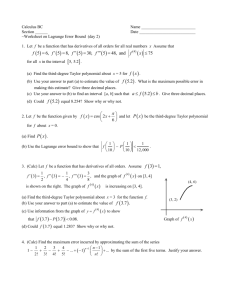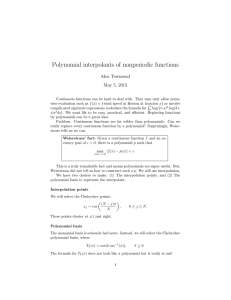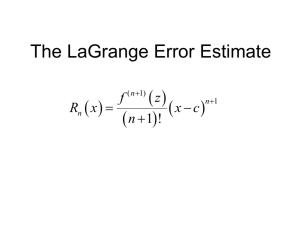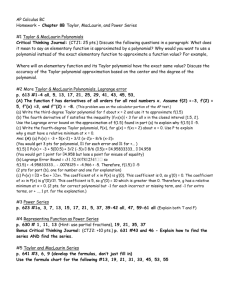Taylor Series Error
advertisement
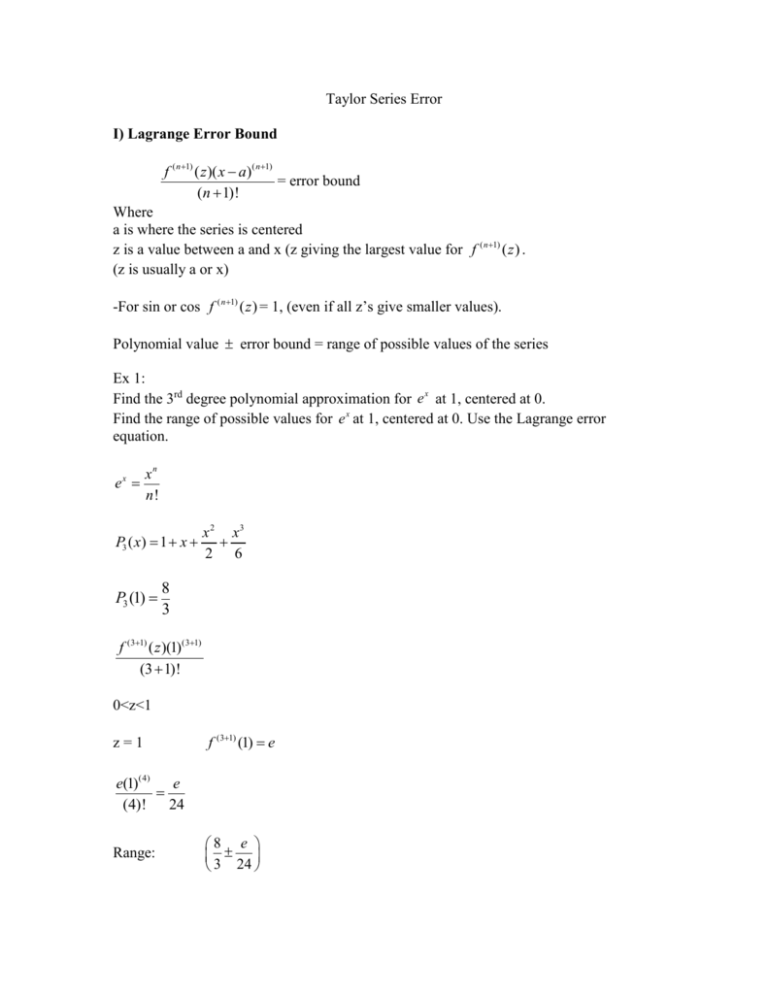
Taylor Series Error I) Lagrange Error Bound f ( n 1) ( z )( x a)( n 1) = error bound (n 1)! Where a is where the series is centered z is a value between a and x (z giving the largest value for f ( n 1) ( z ) . (z is usually a or x) -For sin or cos f ( n 1) ( z ) = 1, (even if all z’s give smaller values). Polynomial value error bound = range of possible values of the series Ex 1: Find the 3rd degree polynomial approximation for e x at 1, centered at 0. Find the range of possible values for e x at 1, centered at 0. Use the Lagrange error equation. ex xn n! P3 ( x) 1 x P3 (1) x 2 x3 2 6 8 3 f (31) ( z )(1)(31) (3 1)! 0<z<1 z=1 f (31) (1) e e(1)(4) e (4)! 24 Range: 8 e 3 24 Ex 2: Find the 4th degree Maclaurin polynomial approximation for cos(x) where a = 0, evaluated at 1. Find the Lagrange error bound. (1)( n ) x 2 n cos(x) = (2n)! P4 ( x) 1 P4 (1) x2 x4 2 4! 37 24 f (2 n2) ( z )( x)(2 n2) (2n 2)! f 6 ( z) 1 (1)(1)(6) 1 1 (6)! 6! 720 Ex 3: What degree of Taylor Polynomial for ln(1.2) might have an error < .001 f ( n 1) ( z )( x a)( n 1) (n 1)! (1)( n 1) (n 1)! f ( x) xn n n! n 1 (1.2 1)n1 n ! (.2) n1 1 .2 z n1 (n 1)! (n 1)! z n1 n 1 z z=1 1 n 1 .2 .001 n 1 n = 2.5 n = 3 II) Alternating Series Error In a series (1) n 1 n 1 an : The upper bound of the error is found by the n + 1 term. error < an1 Ex 1: What degree polynomial for the function n 0 (1) x n has an error less than 1/4 for x = 1 n! n 2 x 2 Third term = 1/6 < 1/4 P2 ( x) 1 x III) Actual Error If the actual value of the function is available, the error of a polynomial estimation can be found by subtracting the polynomial value from the actual value. f(x) - Pn ( x) = error Ex. 1: What is the error for the fourth degree polynomial approximation of cosx when x = P4 ( x) 1 x2 x4 2 24 P4 ( ) .707429 4 cos( ) .707107 4 Error = cos( ) P4 ( ) .000322 4 4 4
